XTAR WP2 II Charger
Reviewer's Overall Rating: ★★★★ +1/2
Key Features
- Charges any lithium cell that can fit, in the battery bay, 50 to 70mm length, and shorter cells with spacers (were not included in sample)
- 16340, 14500, 14650, 17670, 18500, 18650, 18700
- Charge rate selectable at 500 or 1000mA max current
- 12V input
- Usb type A socket output up to 500mA (powered by battery bay 1)

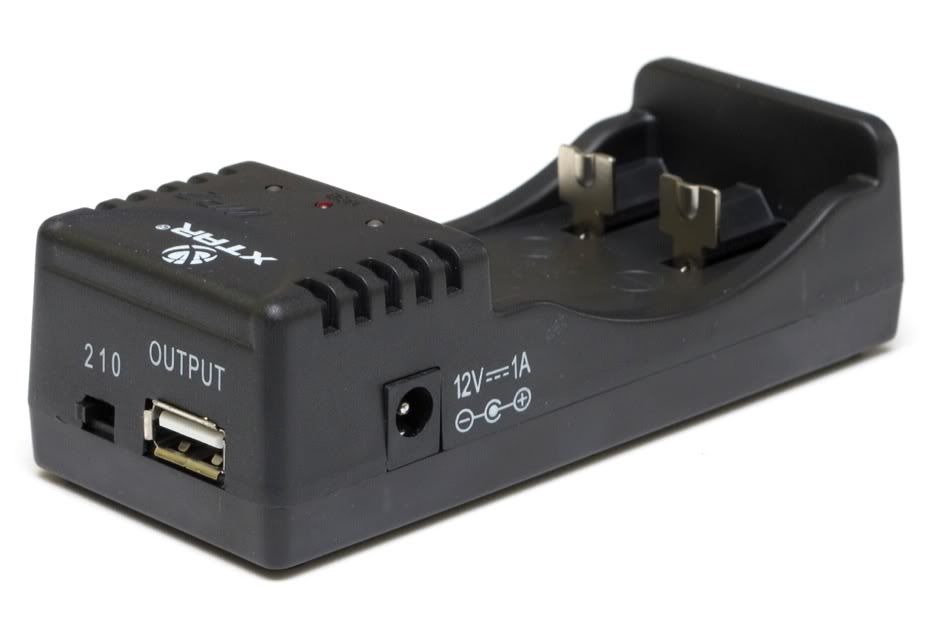
Overview
The XTAR WP2 II charger is a dual bay rechargeable lithium battery charger released by XTAR in mid 2011. It offers 2 independent charging bays which can take cells 50-68mm in length, and cells shorter than that with suitable spacers. This means cells from 14500s, up to practically all protected 18650s will fit. The XTAR 18700s (68mm long) are also accepted in this charger. With spacers (not included in my review sample), shorter cells can be charged, such as 16340s.
Its a true constant current/ constant voltage charger which has been tested and demonstrated to have a true cutoff at 4.20v and no floating/trickle charging tendencies which is a problem seen too often in more budget chargers. It will re-initiate charge when the voltage drops below 4.06v. Overall this is one of the better budget chargers for its class, and offers an excellent features to value ratio.
This charger also boasts a USB (Type A) socket which can provide up to a rated 500mA at 5.0V (almost). It is powered by the left most battery bay only, and given the power draw, it would be recommended that only cells happy to deliver at least an amp be used here. This means your standard 16340 will be pushed to at least 2C discharge, while a good 18650 will comfortably deliver power for up to 2 hours.
The charger accepts 12V input, and comes with a 12V switchmode plugpack, as well as a cigarette lighter adapter for when your on the road. There is no internal mains power supply within the unit, which helps keep the size of the charger itself down.
What it comes with
- Box
- Charger
- Mains plug pack
- Cigarette lighter socket cable
- Warranty card
- Instruction booklet
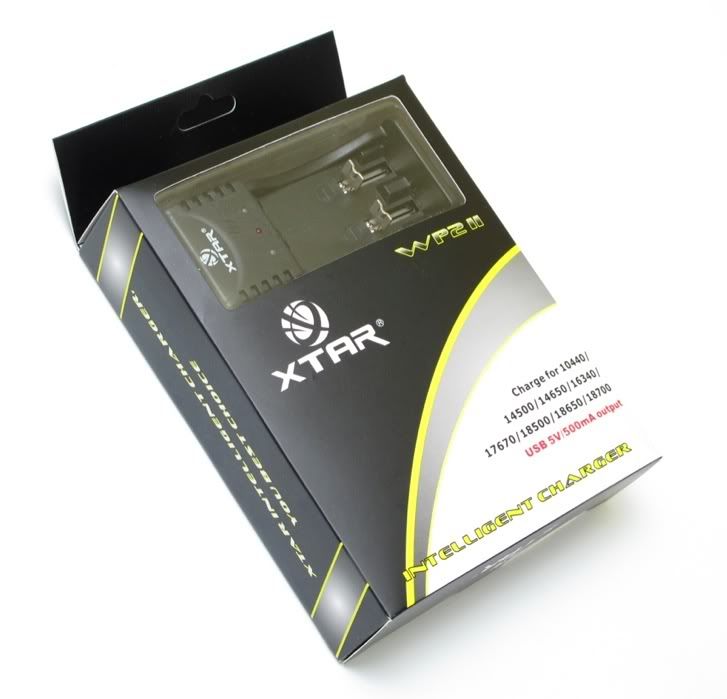
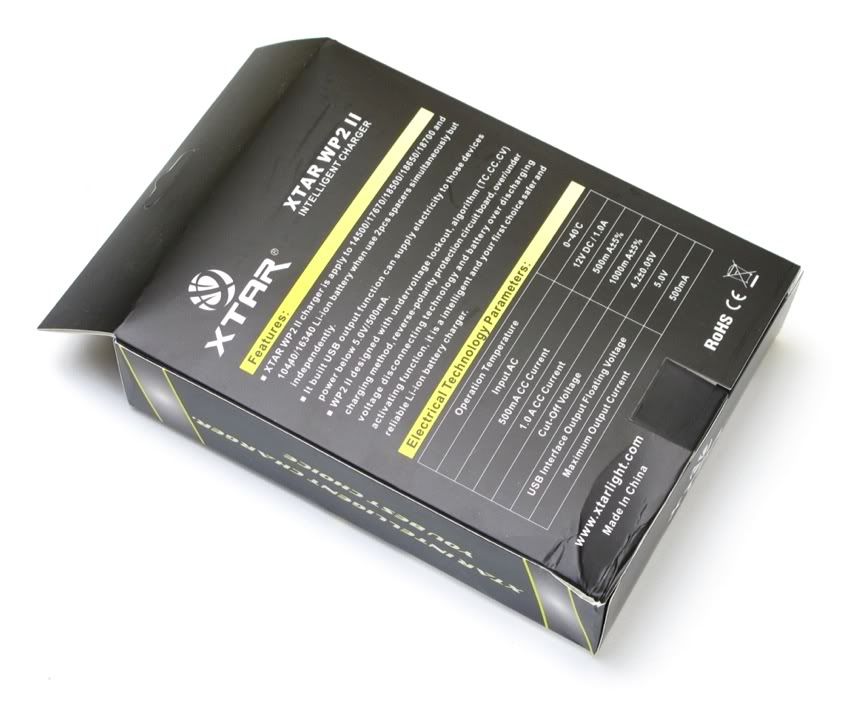

The Charger comes with in a very professional looking card box with a matte and shiny finish with a window for the charger. The contents are securely held in position by a clear plastic vac formed frame.
The charger comes with a switchmode 12V plugpack that accepts 110 to 250v, and has a rated output of 12V 1A. This plugpack has straight parallel pins mounted to the casing of the plugpack, and is terminated by a conventional 2.1mm DC jack connector on about 4 feet of cable. The plugpack is relatively compact and should be able to fit on a conventional power board without obstructing other narrow base plugs and chargers. Also provided in my sample from XTAR is an australian plug adapter which was on the loose side, but functions fine. There is also a small green LED indicator on the plugpack which is lit when the adapter is powered.
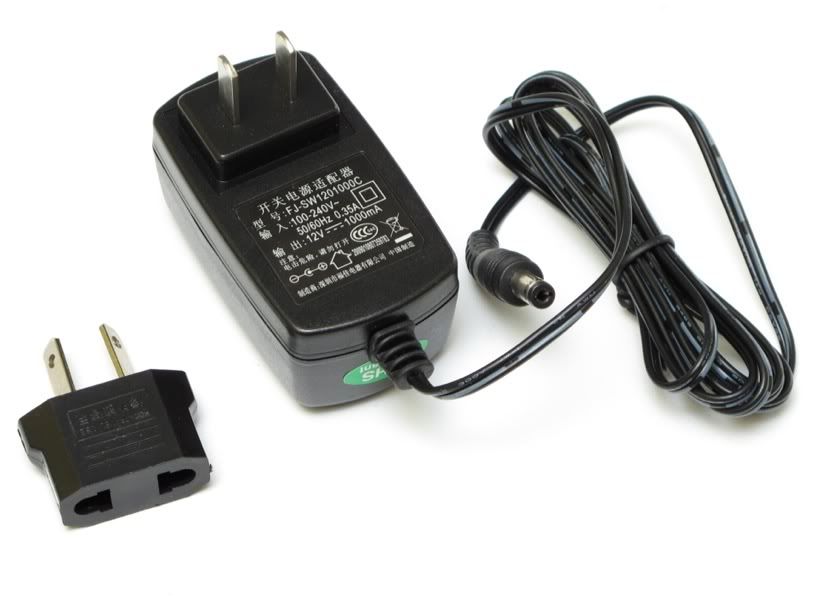

Also included in the package is a cigarette lighter cable for automotive use where a 12V supply is available. This was a basic spiral cable, with an accessible M205 2A fuse, terminated with a fixed DC 2.1mm jack. The spiral cable is 1.5 feet long at rest, stretchable up to 3 feet, but starts to require some tension. I'm not a big fan of spiral cables, and although this one is relatively soft, its still not very convenient. At least it looks and feels fairly robust.
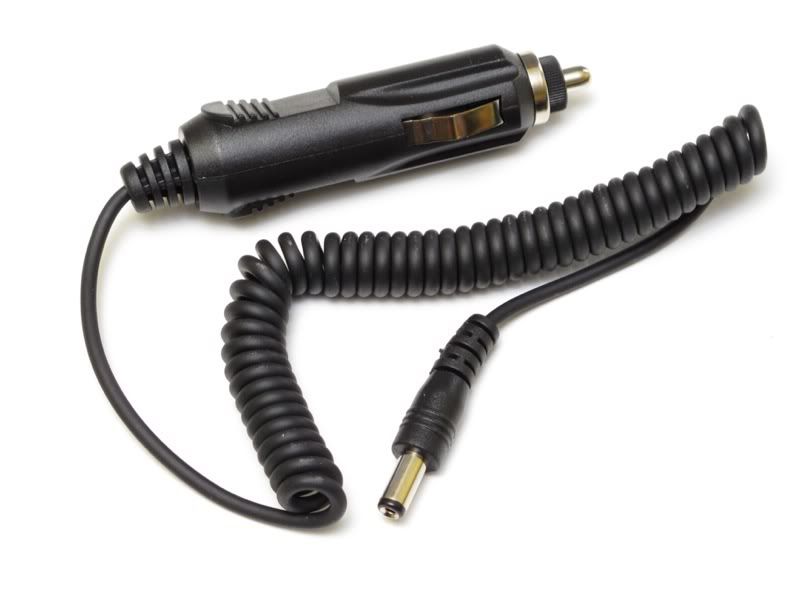
Charger
- True CC/CV charging profile
- Terminates at 100ma
- Terminates properly at 4.2 volts
- Doesn't trickle charge, only restarts below 4.06 volts
- Faster than most budget chargers, but won't win prizes for the fastest charger
- Charging profile is safe
- Both bays seems to behave fairly independently, with slight but minimal cross charge-termination interference
- Both bays can deliver full advertised current concurrently
The XTAR WP2 II charger demonstrates a proper CC/CV charging profile with a consistent and proper termination when charging rate drops to 100mA. This is a decent cutoff current, if not a little on the higher side for smaller cells, but this is really only significant in cells less than 1000mA capacity. Smaller cells may lose out on a couple percent of charge, but not something to be too concerned about.
Charging doesn’t restart until the battery voltage drops below 4.06V, which is a reasonable restart voltage that should prevent constant re-charging in decent cells. Cutoff also is a true cutoff with no significant measurable current flow that could float cell voltages excessively. Cells left on the charger for a day did not demonstrate any increase in cell voltage beyond a resting 4.20V, and again reinforces the safer nature of this charger. I did not test longer than a day, but cells really shouldn't be left on for longer than that.
The charging profile of this charger truly follows that of a CC/CV charger far more accurately than many budget chargers. This means that before the voltage reaches 4.20V, it will continue to apply full charging current (CC phase), but the moment it measures 4.20V, it will drop the current to maintain the measured 4.20V (CV phase). This continues until it the current drops to about 100mA, when charge will be terminated. Many budget chargers will back off early due to less accurate or more conservative charging feedback systems, while the XTAR WP2 II will run close to a true CC phase and apply close to full current to 4.20V, allowing for faster charges without prematurely reducing current.
The voltage during the CV phase appears to be well regulated with the charger targeting a resting voltage of 4.20V. The charger measures this voltage regularly by turning off the charging current and measuring the cell floating voltage, and then continues to apply a charging current. This method of measuring means the charger tries to target a 4.20V target, but the cell voltage is allowed to rise slightly above 4.20V during the charging periods.
The charger does not allow the voltage to go any further beyond this, and can be considered to be generally a safe charger. It is able to fully charge your cells, without any behaviours that would be cause for serious concern.

The above graph shows the highest voltage graph I recorded on this charger. A trustfire 2400mA 18650 protected cell was charged from a resting voltage of 3.5v. The WP2 II charger was set to 1000mA. You can see the constant current section, followed by the gradual reduction in current as the voltage neared 4.23v. Once the cell had reached a peak voltage of 4.23v, charge was terminated and the cell voltage dropped back down to a resting 4.20V. This was the highest recorded voltage, with most other charge cycles reaching a peak between 4.20 to 4.22v, and a resting cell voltage of 4.18 to 4.20.
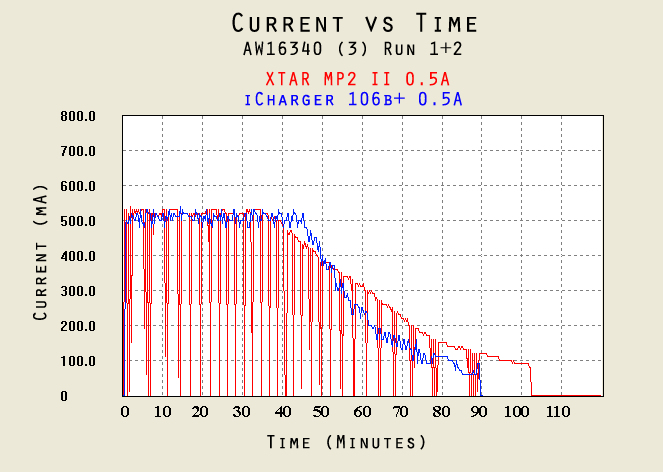
This graph shows the charge current of the WP2 II charger vs the iCharger charging the same cell consecutively. Comparing the two, the XTAR still shows a very true CC/CV charging profile. The difference in the graphs comes from the fact that the iCharger has additional voltage sensing wires.
USB output
The USB output of the XTAR WP2 II charger is a new feature with this model, and claims to provide 5.0V up to 500mA. The most I got from the charger was 4.45V at 450mA. Beyond this the charger started to fade and it lost more voltage. This was drawing from a freshly charged trusfire 2400mA. The trustfire cell measured 4.05V 1.10A under load to provide this output. This represents an efficiency of 45%! Certainly not a great level of efficiency. A great feature for emergency use, but not something I would want to be using regularly.
Also featured are voltage dividers to provide a voltage on the Data(+) and Data(-) lines of the USB connector to encourage devices such as apple products to "recognise" the device as an authorised charger. The configuration is setup to let apple devices know it can deliver 500mA. I found that my iPhone and iPod would charge with the usb output, but would only be happy to work when powered by a half to full charged 18650 trust fire flame. Lower charged cells were not able to provide enough power to keep the power supply in regulation and would cause a brown out that would cause the device to cancel charging. A 16340 would not fare anywhere near as well, and would not provide much charging power before it can no longer keep up with the power draw.
The switch mode USB output also has a standby current draw of 5.8mA average. This means that a cell placed in the charger, with the USB output enabled, but nothing connected will still draw power from your battery. This means a decent 18650 will be drained flat in 20 days, a 16340 flattened in 4 days.
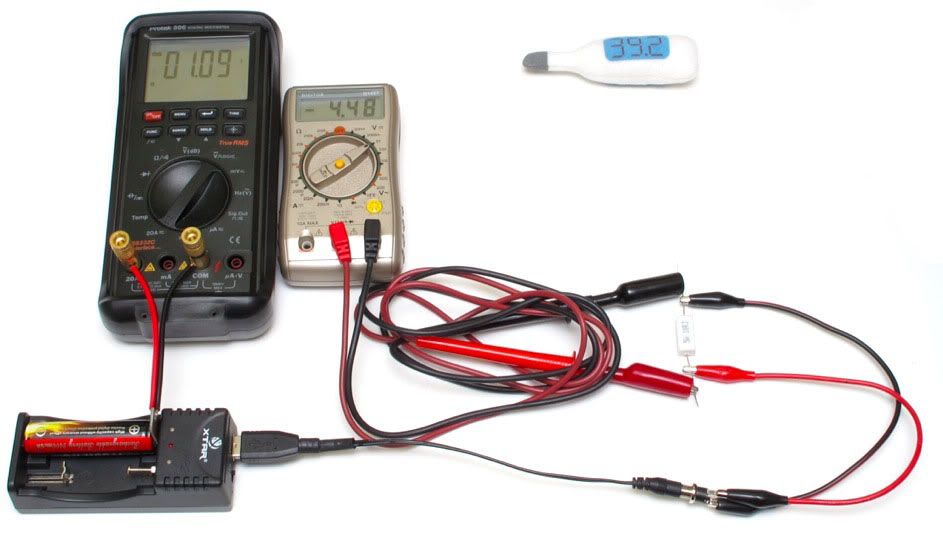
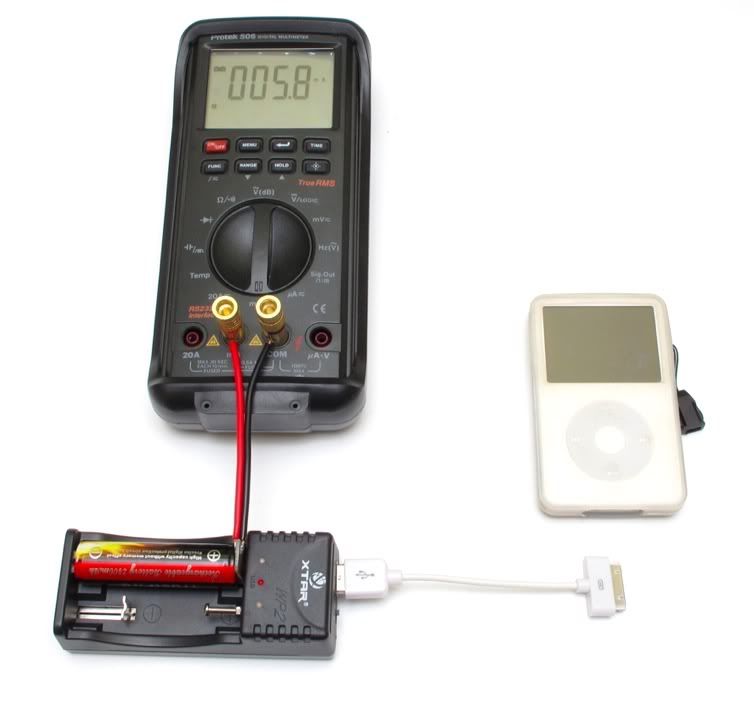
Build
- Decent build quality
- Clean mouldings
- Battery slider is usable, not too stiff, but not smooth either
- Has 2 sockets, DC 2.1mm jack on left, USB Type A socket on top
- Battery adapters not included in review package
This charger feels pretty solid, well built with no creaking, or rattling. The plastic mouldings are sharp and clean with a good even matte finish. The printings are clean and moderately well placed, but the labelling for the charge current is not very self explanatory. After reading the manual, the switch positions "2 1 0" represent the 1A charge, 0.5A charge, and USB output, respectively. The placement of the jacks are nothing special, with the DC jack connecting via the left side of the charger and the USB + switch on the top edge.
The battery sliders track well and have minimal slop, and slide reasonably well, but are not perfectly smooth. They do rank highly against other chargers of this price range though. The negative terminal has a small dimple to allow for a good raised contact point against the battery terminals.
The positive terminal of the battery connector sits behind the plastic moulding, but has a pressed section that lifts that out to be fractionally proud of the plastic frame. This allows decent contact with most cells, but I don't have any flat-tops to test. A magnet would easily alleviate any problems with the contact.
There is also a M3 threaded hole in the centreline of the positive contact, and this is where spacers can be very conveniently screwed into the charger for a quick but sturdy spacer solution. These were not included in my sample, but I had a late collection of M3 screws which I simply screwed into place and locked in position with another nut for my 16340 adapter. Care must be taken to ensure the screw does not go further than a couple threads as a long screw can do damage to the internal components of the circuit.


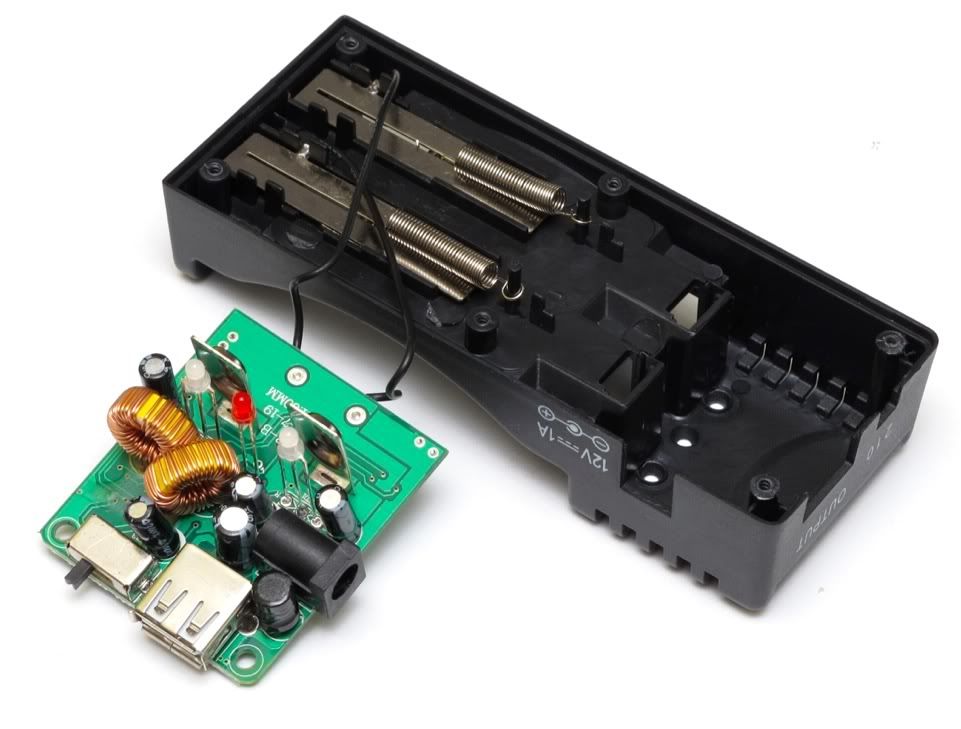
Conclusions
Pros
- Safe reliable charger
- Compact, simple design with 12V input and external compact switching power supply
- Good build quality with decent contact quality.
- Excellent feature to price ratio
- A Great buy, highly recommended for most common lithium cells from 16340s to 18700s
Cons
- Charge rate could be a little on high side for 10440, larger cells such as 26650 have not been tested, only a problem of fit. Was not advertised to support any of these cells anyway)
- USB output can be demanding on cells, requires a good large cell to maintain output.
Overall
- A great charger, great value for money. Highly recommended as a safe and reliable charger that is safe enough for the user with some understanding of what their doing.